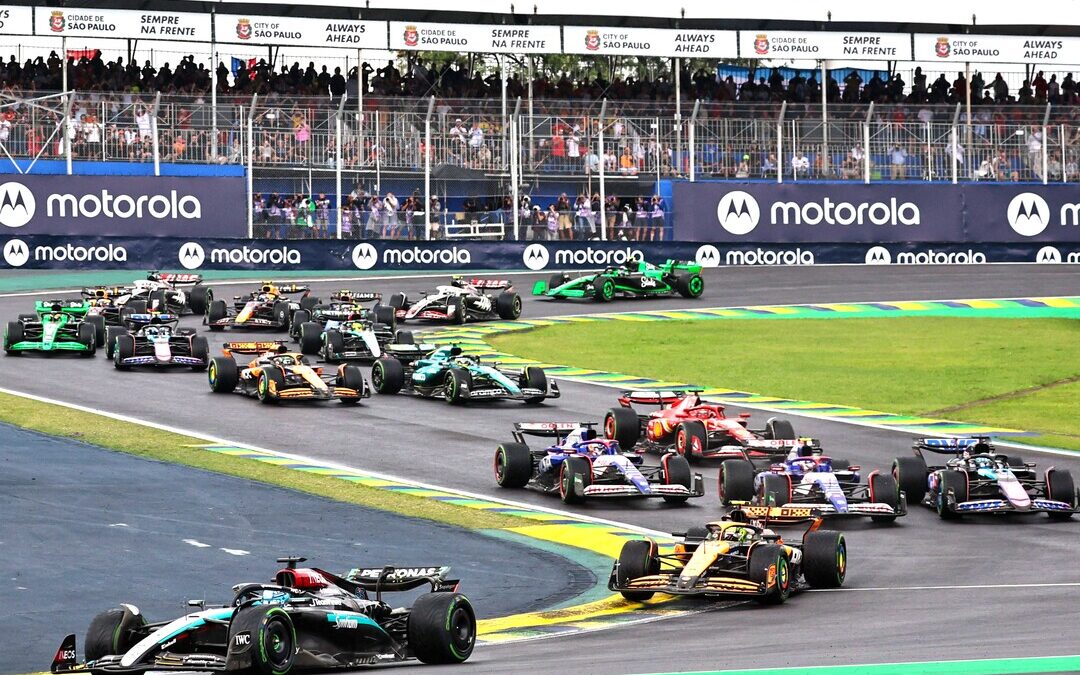Formula 1 Cuts Carbon Emissions 26%, Stays on Track for Net Zero by 2030
Formula 1 achieves 26% carbon emissions cut since 2018, advancing its push toward reaching its net-zero target by 2030.
Motorsport giant Formula 1 announced on Tuesday that it had reduced its carbon footprint by 26 percent by the end of 2024, compared to 2018 levels, placing the sport over halfway toward its goal of becoming net-zero by 2030.
The emissions cut comes during a period of rapid expansion for the sport, with the race calendar growing from 21 events in 2018 to 24 in each of the past two seasons and global attendance surging from 4 million to 6.5 million.
Despite this growth, F1’s annual emissions fell to 168,720 tonnes of carbon dioxide equivalent, down from a revised 2018 baseline of 228,793 tCO2e. The baseline was updated to reflect improved data from suppliers and align with international sustainability standards.
Without intervention, Formula 1 estimated its carbon footprint would have risen by 10 percent over the same period.
Targeting Carbon Neutrality Through Innovation
The emissions reductions stem from efforts across all parts of the sport, including teams, race promoters, partners and the governing body Fédération Internationale de l’Automobile.
The progress forms part of F1’s 2019 commitment to halve emissions by 2030 and offset the remaining output through verified carbon removal initiatives.
Stefano Domenicali, Formula 1’s president and chief executive, said the figures demonstrated that “sustainable development is possible” even as the sport grows globally.
“Once again, this mentality has allowed us to make important progress, not only for those who work in this world, but also for society as a whole,” he said in a statement.
Key Reductions in Factories, Travel and Freight
F1 factories and facilities reported a 59 percent reduction in emissions from 2018 levels, largely due to the switch to renewable energy sources.
Travel-related emissions declined by 25 percent, supported by the adoption of sustainable aviation fuel and the expansion of remote broadcast operations.
Logistics emissions decreased by 9 percent, thanks to the deployment of more efficient Boeing 777 planes and an increased use of biofuel-powered trucks in Europe.
On a per-race basis, emissions from event operations decreased by 12 percent, despite an increase in the overall calendar.
The sport has also begun trialing low-carbon power systems using renewable energy at select Grand Prix, a program that is set to cover all European races by 2025.
Sustainable Fuels and Calendar Restructuring Ahead
Formula 1 confirmed plans to introduce 100 percent advanced sustainable fuels for all cars in 2026, alongside a new generation of hybrid power units.
The fuel, designed to be compatible with standard road vehicles, is part of a broader strategy to support global emissions reductions in transportation.
Race scheduling has also been revised to reduce freight travel. In 2024, the Japanese Grand Prix moved to April to group Asian races, while from 2026, the Canadian round will shift to May to streamline the European leg of the season.
Ellen Jones, head of ESG at Formula 1, said the progress was a result of “years of hard work across the sport.”
“Looking ahead, we have a clear plan to meet our commitments,” she said. “Formula 1 is uniquely placed to show that performance and sustainability can support one another.”
Investments Supporting Operational Efficiencies
Formula 1 said it continues to invest in SAF and sea freight to reduce air transport needs and establish regional equipment hubs.
The use of remote production technologies has also expanded, with around 140 personnel now operating each race from the UK-based Media & Technology Centre.
Future investments are expected to bring not only environmental benefits but also financial efficiencies across operations, according to the organization.
As of 2025, feeder series Formula 2 and Formula 3 cars will operate entirely on sustainable fuel, further paving the way for the transition to a fully decarbonized championship.
Nirmal Menon
Related posts
Subscribe
Error: Contact form not found.


